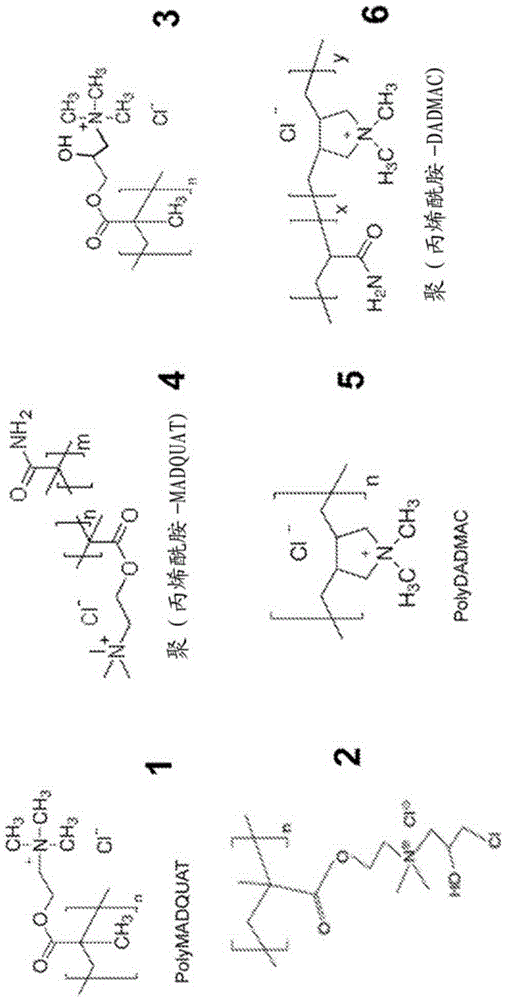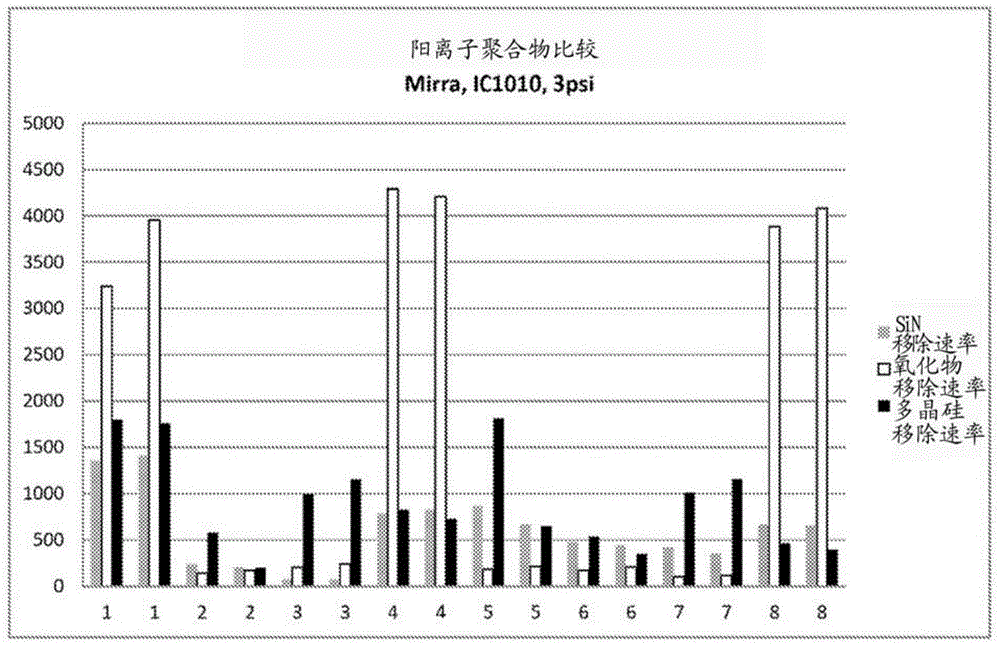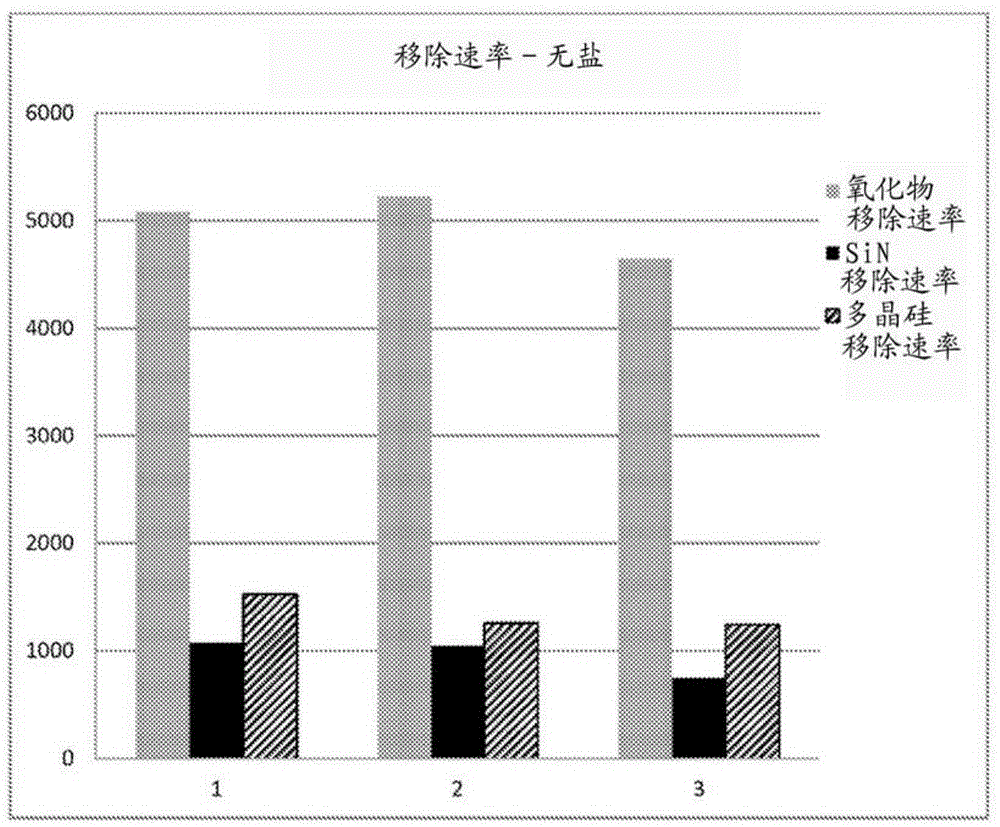Compositions and methods for CMP of silicon oxide, silicon nitride, and polysilicon materials
A chemical-mechanical and compositional technology, applied in the field of polishing compositions, which can solve problems such as undiscovered feature combinations
- Summary
- Abstract
- Description
- Claims
- Application Information
AI Technical Summary
Problems solved by technology
Method used
Image
Examples
Embodiment 1
[0030] This example illustrates the effect of various cationic polymers on oxide, nitride and polysilicon removal rates in ceria-based CMP polishing compositions.
[0031] An aqueous polishing slurry having a pH of 4.3 and comprising colloidal ceria (0.4% by weight, primary average particle size of 60 nm) and a cationic polymer was used on a MIRRA polishing device using a DOWIC1010 polishing pad at a platen speed of 100 rpm, a load of 85 rpm. Silicon oxide (TEOS), silicon nitride, and polysilicon blanket wafers were chemically-mechanically polished at a tool speed, a downforce of 3 psi, and a slurry flow rate of 150 mL / min; polishing time: 60 seconds. The polymers and polymer concentrations utilized in the slurries along with the observed removal rates for polishing two wafers each of nitride, oxide and polysilicon (in in units) are shown in Table 1. figure 1 Chemical structure diagrams of selected cationic polymers, including some of the polymers evaluated in this example, ...
Embodiment 2
[0037] This example illustrates the effect of added salt and cationic polymer concentration on oxide, nitride and polysilicon removal rates in a ceria-based CMP polishing composition comprising a methacryloxyalkylammonium polymer. influences.
[0038] An aqueous polishing slurry having a pH of 4.5 and comprising colloidal ceria (0.4% by weight, primary average particle size of 60 nm) and a cationic polymer was used on a MIRRA polishing device using a DOWIC1010 polishing pad at a platen speed of 100 rpm, a load of 85 rpm. Silicon oxide (TEOS), silicon nitride, and polysilicon blanket wafers were chemically-mechanically polished at a tool speed, a downforce of 3 psi, and a slurry flow rate of 150 mL / min; polishing time: 60 seconds. The polymers utilized in the slurries are shown in Table 2. The slurry corresponding to composition 1 had a polymer concentration of 15 ppm, the slurry corresponding to composition 2 had a polymer concentration of 17 ppm, and the slurry corresponding...
PUM
| Property | Measurement | Unit |
|---|---|---|
| particle size | aaaaa | aaaaa |
Abstract
Description
Claims
Application Information
 Login to View More
Login to View More - R&D
- Intellectual Property
- Life Sciences
- Materials
- Tech Scout
- Unparalleled Data Quality
- Higher Quality Content
- 60% Fewer Hallucinations
Browse by: Latest US Patents, China's latest patents, Technical Efficacy Thesaurus, Application Domain, Technology Topic, Popular Technical Reports.
© 2025 PatSnap. All rights reserved.Legal|Privacy policy|Modern Slavery Act Transparency Statement|Sitemap|About US| Contact US: help@patsnap.com



